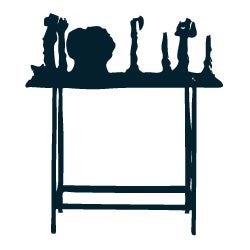Jim Dine is a painter and sculptor working in a Pop Art style. Growing up, his family owned a hardware store, and so he often depicts tools in his works of art. Notice in this sculpture how Dine used symbolism. He placed symbols of tools, such as a hammer, alongside symbols of familiar works of art, like the Venus de Milo. The artist may be suggesting that the everyday tools of an artist can also be seen as historically valuable and visually pleasing. This approach is common in Pop art, which aims to make art more familiar and approachable by using everyday objects as symbols for greater meanings.
What kind of objects do you see? What do these objects symbolize to you?
Are some of these items familiar to you? Have you ever thought that everyday objects could be seen as art?
How can we tell the difference between familiar objects of our daily lives and that of art?
Is the artist challenging our idea of art? How might we begin to see the beauty of everyday objects and the purpose of art?
Choose a tool that is used frequently in your home, such as a toothbrush, scissors, or something from the kitchen like a spatula. Make several drawings of it in different sizes using a variety of media, such as pen and pencil or paint. Compare your artworks to each other and to the original subject you chose. How does the change in size and media affect how you view the object? Does the object seem different to you now that you have taken it out of its original context? What new things do you notice about the object?
Pop Art -- a visual art movement that emerged in the 1950’s which is characterized by the use of imagery and techniques drawn from mass media and popular culture
Appropriation -- using something not made by you
Symbolism -- representing an idea or concept through images

